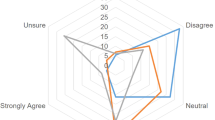Abstract
Objective:
The purpose of this study was to explore the multilevel contextual factors that influenced the implementation of the Obstetric Hemorrhage Initiative (OHI) among hospitals in Florida.
Study Design:
A qualitative evaluation was conducted via in-depth interviews with multidisciplinary hospital staff (n=50) across 12 hospitals. Interviews were guided by the Consolidated Framework for Implementation Research and analyzed in Atlas.ti using rigorous qualitative analysis procedures.
Result:
Factors influencing OHI implementation were present across process (leadership engagement; engaging people; planning; reflecting), inner setting (for example, knowledge/beliefs; resources; communication; culture) and outer setting (for example, cosmopolitanism) levels. Moreover, factors interacted across levels and were not mutually exclusive. Leadership and staff buy-in emerged as important components influencing OHI implementation across disciplines.
Conclusion:
Key contextual factors found to influence OHI implementation experiences can be useful in informing future quality improvement interventions given the institutional and provider-level behavioral changes needed to account for evolving the best practices in perinatology.
This is a preview of subscription content, access via your institution
Access options
Subscribe to this journal
Receive 12 print issues and online access
$259.00 per year
only $21.58 per issue
Buy this article
- Purchase on Springer Link
- Instant access to full article PDF
Prices may be subject to local taxes which are calculated during checkout

Similar content being viewed by others
References
Berg CJ, Callaghan WM, Syverson C, Henderson Z . Pregnancy-related mortality in the United States, 1998 to 2005. Obstet Gynecol 2010; 116 (6): 1302–1309.
Berg CJ, Harper MA, Atkinson SM, Bell EA, Brown HL, Hage ML et al. Preventability of pregnancy-related deaths: results of a state-wide review. Obstet Gynecol 2005; 106 (6): 1228–1234.
Florida Department of Health, Division of Community Health Promotion. Pregnancy-Related Deaths Due to Hemorrhage, 1999-2012 [cited 18 March 2016]. Available from http://www.floridahealth.gov/statistics-and-data/PAMR/_documents/Pregnancy-Related%20Deaths%20Due%20to%20Hemorrhage,%201999-2012%20Brief.pdf.
Burch D, Noell D, Hill WC, Delke I . Pregnancy-associated mortality review: the Florida experience. Semin Perinatol 2012; 36 (1): 31–36.
Lyndon A, Lagrew D, Shields L, Melsop K, Bingham B, M E Improving Health Care Response to Obstetric Hemorrhage, 2010: Developed under contract #08-85012 with the California Department of Public Health; Maternal, Child and Adolescent Health Division, Stanford, CA.
Florida Perinatal Quality Collaborative. Florida Obstetric Hemorrhage Initiative Toolkit: A Quality Improvement Initiative for Obstetric Hemorrhage Management, 2015 [cited 1 March 2016]. Available from http://health.usf.edu/publichealth/chiles/fpqc/OHI.htm.
Wirtschafter DD, Pettit J, Kurtin P, Dalsey M, Chance K, Morrow HW et al. A statewide quality improvement collaborative to reduce neonatal central line-associated blood stream infections. J Perinatol 2010; 30 (3): 170–181.
McCabe BK, Potash D, Omohundro E, Taylor CR . Design and implementation of an integrated, continuous evaluation, and quality improvement system for a state-based home-visiting program. Matern Child Health J 2012; 16 (7): 1385–1400.
Damschroder LJ, Aron DC, Keith RE, Kirsh SR, Alexander JA, Lowery JC . Fostering implementation of health services research findings into practice: a consolidated framework for advancing implementation science. Implement Sci 2009; 4: 50.
Onwuegbuzie AJ, Leech NL . A call for qualitative power analyses. Qual Quan 2007; 41 (1): 105–121.
Atlas.ti Scientific Software Development. ATLAS.ti 6.2. 2012. Available at http://atlas-ti.software.informer.com/6.2/.
Andreatta P, Marzano D . Healthcare management strategies: interdisciplinary team factors. Curr Opin Obstet Gynecol 2012; 24 (6): 445–452.
Laudert S, Liu WF, Blackington S, Perkins B, Martin S, MacMillan-York E et al. Implementing potentially better practices to support the neurodevelopment of infants in the NICU. J Perinatol 2007; 27 (S2): S75–S93.
Liu WF . The impact of a noise reduction quality improvement project upon sound levels in the open-unit-design neonatal intensive care unit. J Perinatol 2010; 30 (7): 489–496.
Legewie N . An introduction to applied data analysis with qualitative comparative analysis Forum: Qualitative Soc Res 2013; 14 (3).
Acknowledgements
This project was supported by funds from the Florida Department of Health. We thank all the hospitals and multidisciplinary staff members who participated in this study for their time and willingness to share their candid experiences implementing this quality-improvement initiative.
Author information
Authors and Affiliations
Corresponding author
Ethics declarations
Competing interests
The authors declare no conflict of interest.
Rights and permissions
About this article
Cite this article
Vamos, C., Thompson, E., Cantor, A. et al. Contextual factors influencing the implementation of the obstetrics hemorrhage initiative in Florida. J Perinatol 37, 150–156 (2017). https://doi.org/10.1038/jp.2016.199
Received:
Revised:
Accepted:
Published:
Issue Date:
DOI: https://doi.org/10.1038/jp.2016.199
This article is cited by
-
Strategic Priorities for Implementation of Father-Inclusive Practice in Mental Health Services for Children and Families: A Delphi Expert Consensus Study
Administration and Policy in Mental Health and Mental Health Services Research (2023)
-
An Initiative “that you do for one person”: Identifying Barriers and Facilitators to Implementing an Immediate Postpartum LARC Initiative in Florida Hospitals
Maternal and Child Health Journal (2022)
-
Letter to the editor of implementation science in response to “Implementation Science in maternity care, A scoping Review” by Dadich, Piper, and Coates (2021)
Implementation Science (2021)
-
Influencing factors for prevention of postpartum hemorrhage and early detection of childbearing women at risk in Northern Province of Rwanda: beneficiary and health worker perspectives
BMC Pregnancy and Childbirth (2020)
-
Organizational contextual features that influence the implementation of evidence-based practices across healthcare settings: a systematic integrative review
Systematic Reviews (2018)



